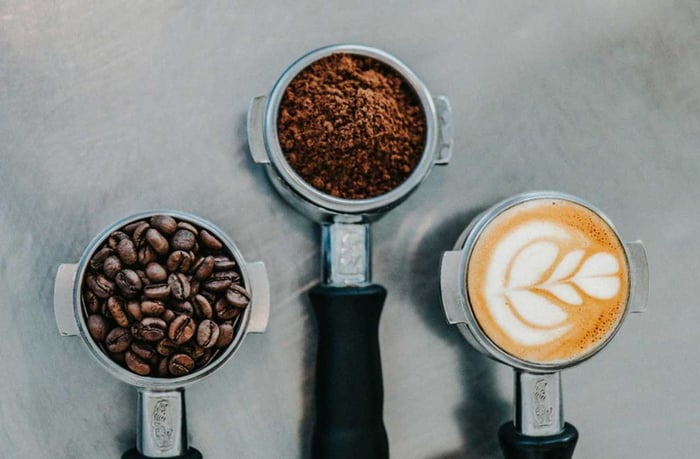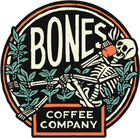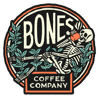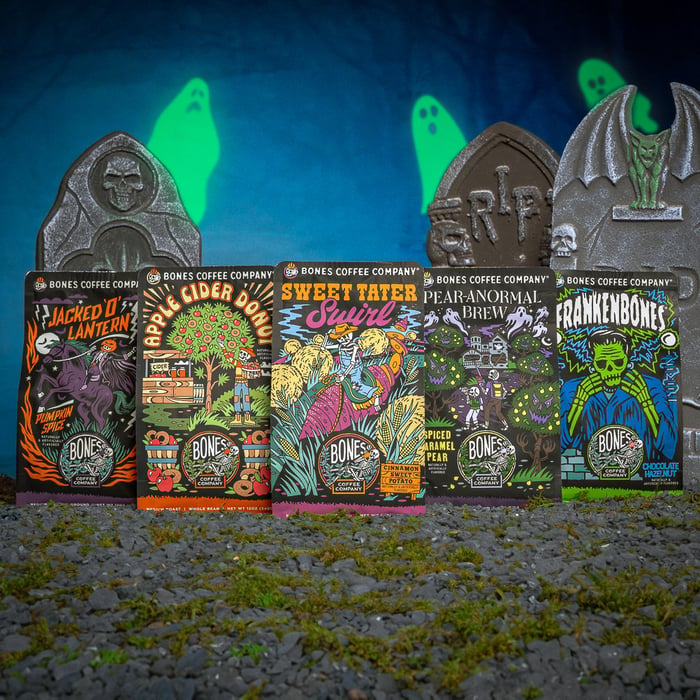Welcome to the ultimate showdown in the coffee world!
Whether you're a seasoned coffee connoisseur or someone who just loves a good caffeine kick, this fun journey will explore the delightful differences between these two beloved beverages.
We’ll examine everything from rich, robust espresso shots to the aromatic allure of a classic cup of drip coffee. Then we’ll discover what makes each unique and why both deserve a spot in your daily routine.
Differences in Taste and Strength
For coffee enthusiasts, differentiating the taste between espresso and coffee is like exploring two different worlds. While both beverages originate from the same beans, their flavors can be strikingly different due to the brewing method and the concentration of coffee solids.
Flavor Profiles
Espresso: Known for its robust, rich, and intense flavor, espresso often carries notes of chocolate, caramel, and nuts. The crema, a golden layer of foam on top, adds a velvety texture and a slight bitterness that enhances the overall experience.
Coffee: Depending on the brewing process, regular coffee can range from light and fruity to dark and smoky. Pour-over and drip methods highlight the bean’s natural acidity and floral notes, while French press and percolator methods bring out deeper, earthier flavors.
Brewing Influence
Espresso: The high-pressure extraction process of espresso pulls out concentrated flavors and oils from the coffee grounds, resulting in a bold and aromatic shot. The quick brewing time (usually around 25-30 seconds) ensures that the flavors are intense and well-balanced.
Coffee: The longer brewing times for regular coffee (usually around 5 minutes for drip coffee to 4 minutes for French press) allow for a more gradual extraction of flavors. This can lead to a more nuanced and layered taste profile, where subtle flavors have time to develop.
Coffee Beans
Espresso: Typically made with finely ground beans, espresso often uses a darker roast to achieve its signature boldness. The roasting process caramelizes the sugars in the beans, contributing to the rich, bittersweet taste.
What about “espresso beans”? Espresso and coffee beans are the same: espresso beans are just dark roast beans.
Coffee: Single-origin coffee beans are popular for regular brewed coffee, allowing drinkers to experience the unique characteristics of beans from specific regions. Light to medium roasts are common, preserving the bean’s natural flavors and acidity.
Unique Experiences
Espresso: Perfect for those who enjoy a quick, intense flavor. It’s often consumed in small quantities as an espresso shot, making it a great choice for a concentrated coffee experience.
Coffee: Ideal for savoring over a longer period, regular drip coffee offers a more relaxed and varied tasting journey. It’s perfect for those who enjoy exploring different brewing processes, like drip coffee or a moka pot.
Comparison Table
Aspect | Espresso | Coffee |
Flavor Intensity | High | Medium to High |
Common Notes | Chocolate, Caramel, Nuts | Fruity, Floral, Earthy |
Texture | Velvety, Creamy (due to crema) | Smooth to Full-bodied |
Roast Level | Dark | Light to Medium |
Brewing Time | 25-30 seconds | 4-5 minutes |
Whether you’re an espresso aficionado or a coffee connoisseur, both beverages offer a rich tapestry of flavors waiting to be discovered. So, grab your favorite mug or demitasse and embark on a flavorful adventure!

When it comes to brewing the perfect cup, the methods for preparing espresso vs coffee couldn't be more different. Each technique brings out unique flavors and characteristics that coffee lovers cherish.
Let’s break down the art and science behind these preparation methods to understand the difference between espresso and regular coffee brewing.
How is Espresso Made?
Espresso is a delightful, intense coffee experience that starts with the right ground coffee beans and ends with a perfect shot. Here’s a step-by-step guide to making espresso that will make you feel like a barista crafting your own coffee beverages!
Step 1: Choose Your Beans
Opt for high-quality, freshly roasted beans. While any beans can technically be used, espresso aficionados often prefer ones specifically crafted for espresso (espresso beans).
Look for espresso beans with a rich, bold flavor profile. Popular choices include products with notes of chocolate, caramel, and nuts.
Step 2: Fine Grind to Perfection
The grind size is crucial for espresso. You need a fine grind, similar to the texture of powdered sugar.
Use a burr grinder for consistency. Blade grinders can result in uneven particles, which can affect the extraction process.
Step 3: Measure and Tamp
Measure out about 18-20 grams of coffee for a double shot of espresso.
Distribute the grounds evenly in the portafilter and use a tamper to press them down firmly. The goal is to create a level, compact puck of coffee.
Step 4: Heat and Brew
Preheat your espresso machine to ensure a consistent temperature for brewing espresso. The ideal brewing temperature is around 195-205°F (90-96°C).
Lock the portafilter into the machine and start the extraction process. For a double shot of espresso, aim for a brew time of about 25-30 seconds.
Step 5: Watch for the Crema
A well-pulled shot of espresso will have a layer of crema on top, a golden-brown foam that adds to the flavor and texture.
The crema should be thick and creamy, indicating a good extraction.
Step 6: Enjoy Your Espresso
Serve immediately in a pre-warmed cup to maintain the temperature and flavor.
With its rich, concentrated flavors, espresso can be enjoyed as is or used as a base for other coffee drinks with steamed milk, such as lattes, cappuccinos, and macchiatos.
To fully appreciate espresso's versatility, explore the different types of coffee drinks and discover how this concentrated shot transforms into beloved beverages like cortados, flat whites, and more, each offering its own unique flavor profile and preparation method.
Espresso brewing is both an art and a science; with practice, you’ll be able to perfect your technique and enjoy a consistently delicious shot every time.
An Express Process: Did you know that the term “espresso” comes from the Italian word for “expressed” or “pressed out”? Espresso refers to the method of forcing hot water through finely-ground coffee, which is why it is so rich and concentrated. |
How is Regular Brewed Coffee Made?
Brewing a perfect cup of drip coffee is an art form that offers endless possibilities for coffee lovers who create their own coffee beverages. Whether you’re a fan of the standard drip coffee maker or you prefer the hands-on approach, there’s a method for brewing coffee out there that will suit your taste buds and lifestyle.
Let’s dive into some of the most popular coffee brewing methods and what makes each one unique.
Drip Coffee Maker: The drip coffee maker is a staple in many households and offices. It’s convenient, easy to use, and can brew multiple cups at once.
French Press: This method allows the coffee grounds to steep in hot water, extracting more oils and flavors.
Pour-Over: The pour-over method is perfect for those who appreciate the finer details of coffee brewing. It offers control over every aspect of the process, from the water temperature to the pouring technique.
AeroPress: The AeroPress is a versatile and portable brewing device that’s perfect for those who love experimenting with their coffee. It combines elements of both immersion and pressure brewing.
Cold Brew: For a refreshing and smooth coffee experience, cold brew is the way to go. This method involves steeping grounds in cold water for an extended period, resulting in a less acidic and naturally sweet coffee.
Each of these methods offers a unique way to enjoy the rich and diverse flavors of brewed coffee. Whether you're brewing a quick cup before heading out the door or taking your time to savor every sip at your local coffee shop, there's a brewing method that's perfect for you. So grab your favorite beans, experiment with different techniques, and discover the endless possibilities of regular coffee!
Differences in Caffeine Content
Caffeine is a major factor in why many of us reach for that morning cup, and the levels can vary significantly when you drink espresso versus coffee. Understanding these differences can help you choose the right brewed coffee for your needs, whether you're looking for a quick pick-me-up or a steady, all-day energy source.
Let's take a closer look at the caffeine content in espresso vs coffee to see which packs more punch.
Caffeine Content Is in a Shot of Espresso
For coffee lovers who crave that perfect jolt of energy, understanding the caffeine content in a shot of espresso is essential. A single shot of espresso, typically 1 ounce (30 milliliters), contains about 63 milligrams of caffeine. This might seem modest compared to a full cup of drip coffee, but espresso is all about packing a punch in a small package.
The following factors can influence the caffeine concentration in your espresso shot:
Type of Coffee Bean: Robusta beans generally have more caffeine than Arabica beans. If you’re using highly caffeinated coffee, the ratio of these beans will affect the final caffeine level.
Roast Level: Contrary to popular belief, darker roasts often have slightly less caffeine than lighter roasts because some caffeine is lost during the roasting process.
Grind Size: A finer grind can lead to a more concentrated espresso shot, potentially increasing the caffeine level.
Extraction Time: The longer the water is in contact with the coffee grounds, the more caffeine is extracted. However, over-extraction can lead to a bitter taste.
So, next time you savor that shot of espresso, you'll know exactly how much caffeine is fueling your day. Whether you're a fan of a single shot or prefer a double (containing approximately 126 milligrams of caffeine), espresso offers a unique and flavorful experience that's hard to beat.
Taste vs Caffeine Content: Many people assume that because espresso tastes stronger, it must have more caffeine. However, the flavor intensity doesn’t necessarily correlate with caffeine level. The brewing process and the type of beans used play significant roles. |
Caffeine Levels in a Cup of Coffee
Ah, the age-old question that keeps coffee lovers buzzing: just how much caffeine is in that delightful cup of joe?
On average, an 8-ounce cup of drip coffee contains about 95 milligrams of caffeine. The caffeine content can vary widely depending on several factors:
Type of Coffee Bean: Robusta beans generally have more caffeine than Arabica beans.
Brewing Method: Different brewing techniques can extract varying amounts of caffeine.
Serving Size: Larger cups naturally contain more caffeine.
Grind Size: Finer coffee grinds lead to more caffeine content.
Water Temperature: Hotter water extracts more caffeine.
Brew Time: Longer brewing times can increase caffeine levels.
Whether you’re a casual sipper or a hardcore coffee connoisseur, understanding the caffeine level in your cup can help tailor your coffee experience to your unique preferences.
Your Perfect Coffee Drink Awaits
In the great debate of espresso vs coffee, there is no definitive winner—only personal preference. Both beverages offer unique experiences and benefits that cater to different tastes and lifestyles.
Whether you savor the intense, concentrated flavors of espresso or enjoy the ritual of sipping a comforting cup of drip coffee, understanding their differences helps you appreciate each cup even more.
Ultimately, the choice to drink espresso versus coffee comes down to what you're in the mood for.
Whichever you choose, you're guaranteed a delicious journey into the rich world of coffee. So, why not enjoy the best of both worlds? Let your taste buds explore the delightful spectrum of espresso and coffee.
Cheers to finding your perfect brew!





